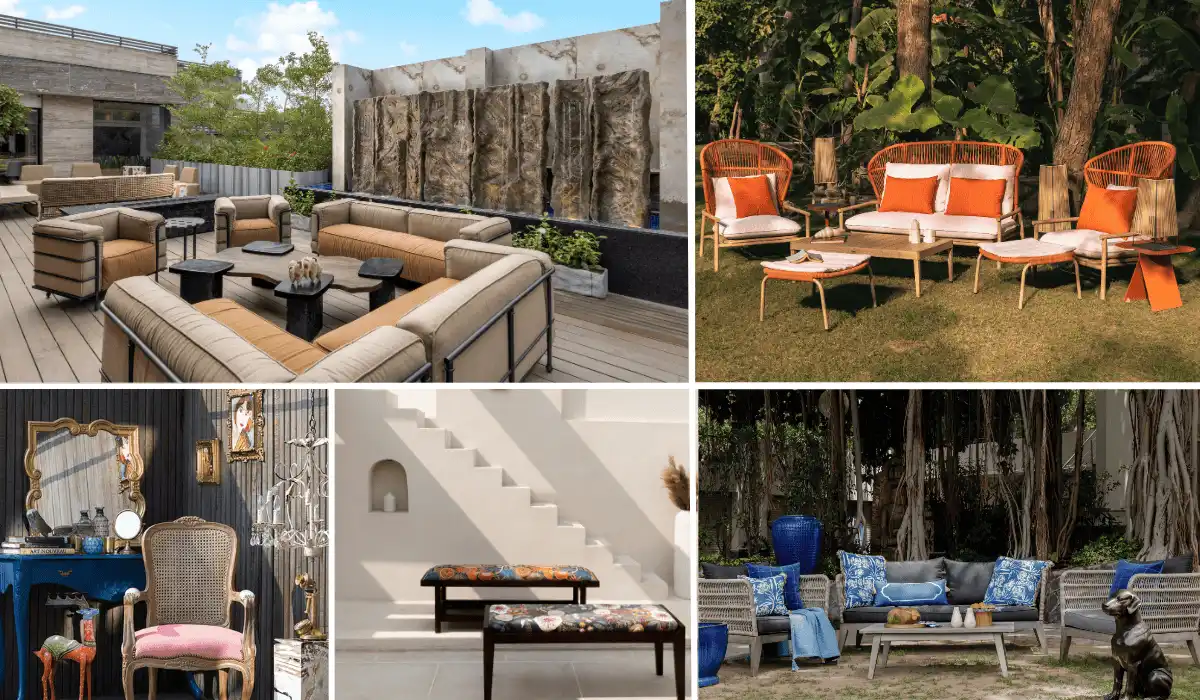We all want our rooms and spaces to maintain an aura and reflect our personality. We layer up, add on, move around, and take out certain elements but striking the right balance is no cakewalk, especially while designing and staging compact residences. The knowledge for tackling small spaces comes only after a lot of research, experimentation, and mock-ups. Smaller design decisions can go a long way in making petite spaces look more commodious. Meena Murthy Kakkar from Envisage provides insightful tips and tricks so that your small spaces never look cramped and cluttered again.
The thought of designing or moving into a new house brings in multiple ideas in mind. From the smallest detail like a light fixture to any civil modification in the house’s layout, it can all become overwhelming, especially if the area available is relatively less. But with a few standards and guidelines kept in mind, one can develop a practical design and upgrade the space to look and feel bigger, while enhancing aesthetics as well.
The first step towards approaching a new house is analysing the health of the building. The house will last longer and age less if all the civil modifications are taken care of. In the case of old houses, the cement mortar loses its strength, leading to dampness and leakage in the house. Hence, to get its structural stability back, replastering and finishing of the walls is absolutely necessary.

Spatial planning comes next in the line. Site analysis in terms of orientation can help one get a clear idea of the air and light entering the house. This volumetric analysis will further determine the size and number of openings that the house will require. Some openings can be enlarged, while others can be modified in terms of materials. Lightweight and sustainable materials like aluminium and UPVC can replace older wooden windows. Additionally, a bug mesh outside the windows can help keep the windows open all day, allowing the rooms to be continuously ventilated.
Redefining walls and optimising doors inside the house can help increase floor space and make a huge difference to the house’s circulation. All the unnecessary walls can be replaced or broken down to make the rooms look bigger. Planning for long term storage that is disguised can help to keep the house organised. Designing a small walk-in closet in a corner next to the bathroom can help free out space from bulky wardrobes and dressing tables. If the area does not permit a walk-in closet, a simple wall merging the storage will make the room look bigger. Keeping some extra storage and using existing furniture such as the bottoms of bookshelves and consoles saves space and keeps the house crisp and clean.

Planning for a designated space for wet areas and household activities will also save the house from unnecessary clutter. Simple pulley systems for drying clothes and provision for storage for housekeeping equipment can keep the wet zones of the house restricted to a space.
Depending on the theme of the décor, the style of furniture is another determining factor for space optimization. A contemporary look involves the manipulation of additional elements like wall panelling, false ceiling for flushed light fixtures and clean yet bulky sofas. For smaller spaces with lower heights, a mid-century or a Scandinavian look goes well. This theme allows for floating arrangement of furniture, while avoiding heavy embellishments. To compensate for lighter furniture and décor elements, one can play with colour and texture. The walls can be neutral and light-coloured. Highlighted colours on walls only bring them closer in terms of experience and make the room look smaller. One can play with the upholstery to add a hint of louder colour. Hand-embroidered and hand-woven finishes for curtains and other fabrics make the space look inviting and warm, while breaking the monotony of neutral walls and minimal furniture. Light fixtures should be minimal, and accent lighting can be added through lamps in the required spaces.
Amidst limited space, multiple activities like a family gathering room and living room have to be conjoined. With excessive use of space, the furniture is prone to wear and tear. The materials used should thus withstand the footprint and be flexible enough for replacement after years of use without calling an expert. Avoiding false ceilings can extensively increase the volume of the rooms, while surface-mounted light fixtures, uplighters, and lamps can suffice the artificial lighting requirements for compact houses. Adhering to these guidelines, even smaller houses with around 1200 sq ft of an area can be designed into creative and aesthetic homes, without the burden of luxury costs.
Envisage
Website: www.envisageprojects.in
E-mail: info@envisageprojects.in
Contact: +91-11-41023779, +91-9810148300
Biltrax Construction Data is tracking 17000+ projects on its technology platform for its Clients. Email contact@biltrax.com to subscribe and generate business leads.
Discover more from Biltrax Media, A Biltrax Group venture
Subscribe to get the latest posts sent to your email.























